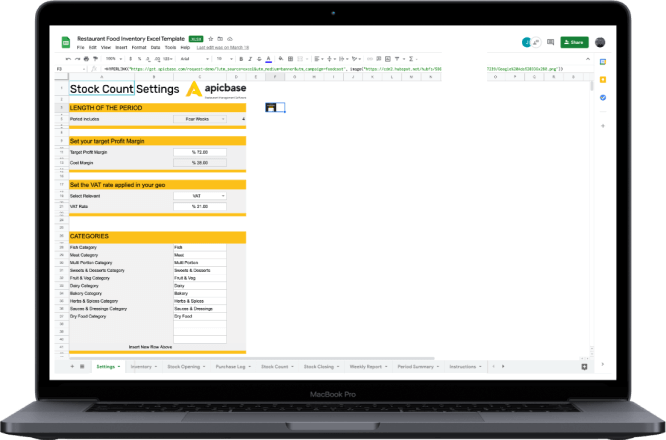Inventory losses are still an everyday occurrence for a lot of restaurant owners and operators.
A bottle of wine here, a steak there, a couple of onions everywhere…
The industry as a whole is making some progress here as more savvy F&B operators realize that by controlling inventory, they’re reining in their biggest cost center — the average restaurant food cost percentage hovers between 28% and 32% of total food sales.
But restaurateurs still have a long way to go to get their stock-taking practices in order.
We’ve collected 12 restaurant inventory statistics that highlight just how critical inventory control is if you want to run a successful and profitable operation – especially if you manage multiple units, hotel locations or a fast-casual chain.
As you go through these stats on restaurant inventory management practices, be hyper-critical of how you handle things in your own restaurants.
Identify areas for improvement, and remember — lowering your average food cost by just one measly percentage point can save you tens of thousands of euros every year.
Keep reading: below the infographic (which you’re welcome to share), you will find detailed explanations of restaurant inventory stats, along with links to research sources.

We encourage you to share the infographic on your own channels. Please add this link to the image.
12 Eye-Opening Statistics About Restaurant Inventory Practices
- Want to increase profits? Start doing your inventory every week, and be meticulous about calculating the cost of sales. According to one study, operators who do that can add between 2% and 10% to their bottom line because they can easily identify sales trends and keep to their ingredient par levels (minimizing over and under ordering).
- According to this study from Toast, both successful (39%) and no-growth (47%) restaurant operations cite high food cost as their #1 challenge.
- A 2017 industry report on restaurant technology notes that 95% of operators say that tech improves the overall efficiency of their operation. In fact, 78% of operators look at those metrics daily, which should give you an idea about just how important they are.
- According to the National Restaurant Association, a whopping 75% of US restaurants are struggling to turn a profit specifically because of their inability to manage food costs and keep them at acceptable levels.
- The same study from the National Restaurant Association unearthed yet another shocking truth — 75% of restaurant inventory shrinkage in the US comes down to employee theft. This pilferage costs restaurants an estimated $20 billion per year. Discourage that behaviour in your employees by developing a robust system combined with an easy-to-use restaurant inventory management software.
- For an average restaurant, 10 to 15 essential menu items account for nearly 50% of sales. Knowing this restaurant inventory stat should prompt you to identify those items in your operation. This does not mean that you will scrub your menus clean of other dishes, but you will know what not to under-order if you want to turn a profit.
A similar study to the one above suggests that elaborate menus might be the thing of the past, finding that 80% of restaurant sales come from only 16% of menu items. - Reduce waste by honing your inventorying and ordering practices — for every €1 that you invest, you will make a cost saving of approximately €7.
- In an average restaurant, 10% of food is wasted before it makes it onto a plate. That’s an unrecoverable cost. Drivers of food waste are oversized portions, extensive menus, and kitchen staff behaviour — all of which can be detected and regulated by implementing sensible inventorying practices.
- Your diners care about how you manage waste – 72% of them are conscious of restaurant waste practices, and 47% are willing to pay more to support restaurants that actively endeavour to reduce food waste.
- There are plenty of ways you can reduce waste in your restaurant once you figure out why and where it’s happening. Unfortunately, according to the reFED report from 2018, only 28% of restaurants repurpose food trimmings, 26% vary portion sizes, and 25% compost leftovers.
- If you’re facing greater inventory challenges because you’re running a multi-outlet business, you’re not alone — 30% of global restaurants are multi-outlet operations.
- Using a dedicated restaurant inventory management software can help you reduce inventory mistakes and overstocking by 17%. Based on typical results we’ve collected from Apicbase users, we’ve found that digitizing inventory management goes a long way when it comes to keeping stockrooms lean and reduce food cost.
Take Control of Your F&B Inventory with Apicbase
Start streamlining your inventory today. With Apicbase, you’ll gain real-time insights, reduce waste, and simplify your stock management across all locations.
Book a product tour now.




